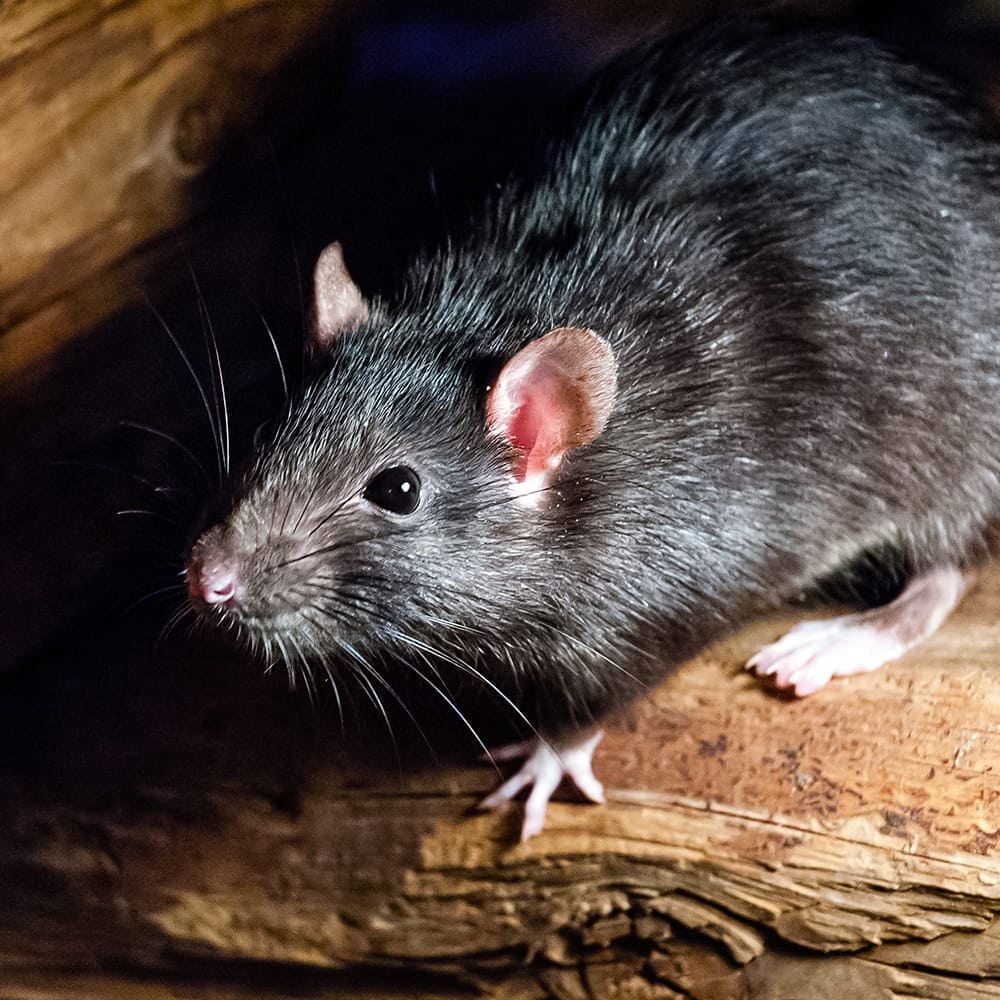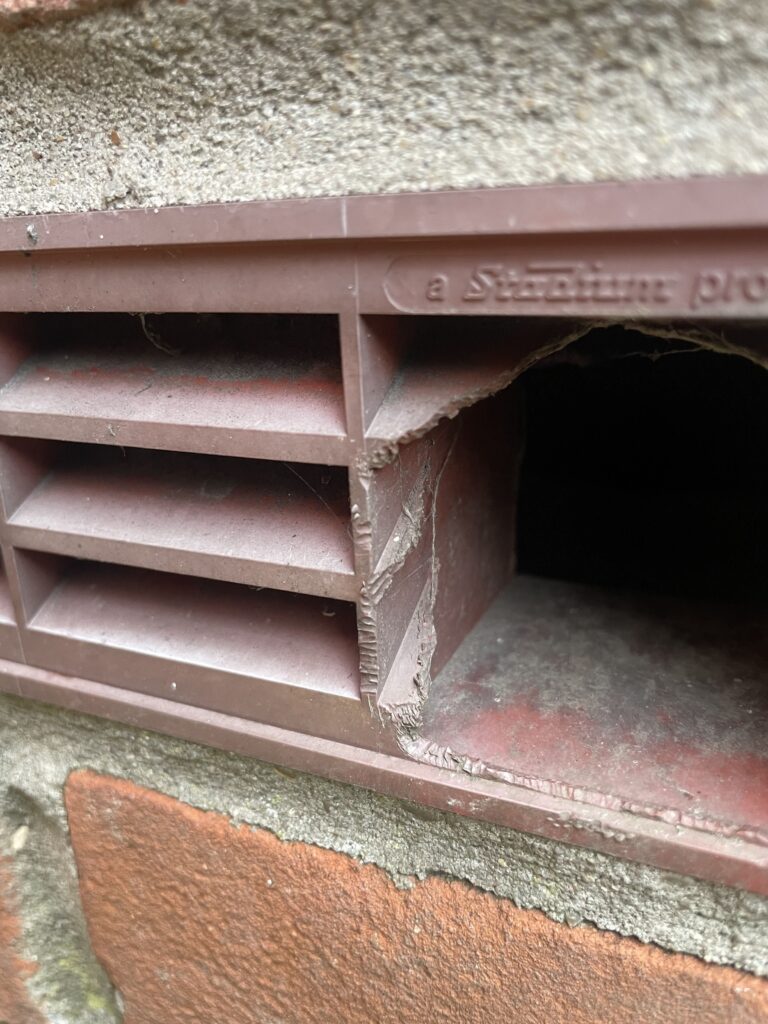Take a good look around your property with a rat’s eye and you will find the places where they can get in – through broken airbricks or places where cement has crumbled away. Rats can get through gaps as small as 15mm, so even a poorly-sealed hole in the wall for a pipe outlet will offer an opportunity to a rat seeking shelter. The black rat (rare but still around) is an agile creature that can make itself at home in your attic, and brown rats can live comfortably under your floorboards, in a wall-space or in a cellar.

You will probably see the signs of rats before you see the creatures themselves. Places where several dark brown pellets have been defecated. Greasy smear marks along the bottom of a wall where the rats have brushed against it. Gnaw marks on wood, plastic, metal, concrete or brick.
Your first sighting of a rat is likely to be a dead one, and the sight of an adult rat will be a shock. The average brown rat weighs around 500 grams, has a stocky body around 23 cm long and a sturdy tail that is slightly shorter – but if you’re providing good food and shelter, they may be as heavy as a kilogramme. The worst part is that they are sociable animals, and they’ll probably have surviving family nearby.
The most common hazard of hosting a rat family is disease. Rats pass on several diseases in their urine, from gnawed areas and from rubbing their bodies against surfaces. The most famous is Weil’s Disease (Leptospirosis), which produces flu-like symptoms in humans initially. Other unpleasant little gifts include Salmonella, Listeria, Toxoplasmosis and hantaviruses. Each can be fatal in the worst cases.
Even without the threat of those illnesses, you shouldn’t give a wild rat a home. Their teeth grow continually, so they gnaw on hard surfaces like water pipes, wood, plastic bins and electrical cables to wear the surface down. Aside from the damage, they can chew through electrical cables or pipes, shorting electrics and causing water or gas leaks. If you’re free of rats at the moment, put in some effort to keep them away.

Check that your buildings are as rat-proof as you can make them. Look for those rat-level gaps. Move your waste bins away from the house, to make it harder for them to leap onto ledges and investigate their way in. Don’t let them smell the food you throw away – wrap and bag food leftovers before putting them into the bin and wash out any food containers you put into recycling. Keep wild bird food in sealed bins and feed only what they will eat before evening – birdfeeders with trays underneath to catch the seeds that birds let fall are the best, but keep those trays emptied and cleaned regularly.
If you suspect you have rats living on your premises, deal with it as soon as you can. A pair of rats can breed a litter of six to eight baby rats every three weeks. That’s about 200 extra rats in a year, plus the litters of those offspring.
You can deal with a rat infestation yourself with rat poison bought from a builders’ merchant or hardware store, but be very careful with it. It’s poison – it can kill pets, wildlife or humans as well as rats. Follow the instructions very carefully, including instructions on disposal of poison and poisoned animals. A mouse or shrew that stole the rat’s poison can become food for an owl, taking the poison on into the owl’s system.
For a faster and safer solution, call on pest control experts. We will trace the nest, identify the problem for certain and take measures to eradicate your rat problem as quickly and efficiently as possible. Rats are increasingly developing resistance to commonly used poisons, so it makes sense to call in a firm with access to a wider range of poison and the training to deploy it safely.
Trust me, you don’t want to find out the hard way that your rat colony is resistant to anything your local shops are allowed to sell you.
Is it possible you have rats living with you? Contact us – we’ll pay them a not-so-friendly call

